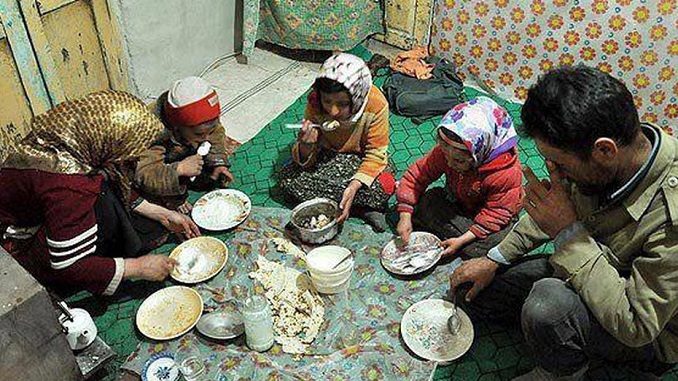
There is no agreement among Iranian officials about how many people live below the poverty line in the Islamic Republic. Not only does this mean it’s impossible to get a clear picture of poverty, it also makes it difficult to combat the problem itself, Iran Wire reports.
On August 31, Mohammad Nahavandian, President Rouhani’s Vice President in Economic Affairs, stated that 10 million Iranians live below the poverty line, but less than three weeks later, Parviz Fattah, head of the big state-supported Imam Khomeini Relief Foundation, said that up to 20 million people could actually be living below the poverty line.
According to Fattah, defining what “absolute poverty” means has political implications, as well as consequences in terms of how Iran engages on the international stage — implying that these were the reasons why Iranian authorities could not agree on a clear and reliable number.
And yet, by analyzing official statistics, it is possible to estimate the number of people who live below the poverty line and the figures show that the number is much higher than those cited by Iranian officials themselves and the number of households living below the poverty line has been increasing in recent years.
But in Iran, the government views such statistical transparency as a threat and so refuses to publish official statistics on the issue. Iran’s Statistics Center published the most recent official statistics about the poverty line in Iran in 2014. In that year, the absolute poverty line for an urban household in Iran was defined as being around one million tomans, or close to $300.
However, the center has not published details since 2014 and this report uses data from the Central Banks’ Urban Household Budget Project, which provides information until the end of the Iranian calendar year 1395 (March 20, 2017).
There is a range of methods for measuring the poverty line and one of the simplest, used by the Iranian Central Bank, is based on research done for the bank that uses a coefficient of the expenses of an average family over a year to determine the relative poverty line.
If in the Iranian calendar year 1385 (2006) an urban Iranian household with a monthly income of less than 400,000 tomans (a little over $180) was considered relatively poor, in 1395 (March 2016-March 2017) a family with the monthly income of 2.2 million tomans (around $650) was considered relatively poor. This is a steep increase, but it is in line with the very high inflation rates that affected the economy in those years.
Even though the statistics presented here are confined to urban households, considering that the urban population is 74 percent of a total population of almost 80 million, the statistics relating to the urban poor must be considered to be a deciding factor.
In the last 10 years, the number of people living under the relative poverty line has constantly fluctuated between 40 to 45 percent of the population. Periodic fluctuations aside, the findings show that attempts by various Iranian administrations to fight poverty have not produced the desired results.
According to statistics released by the head of the Imam Khomeini Relief Foundation, in 1395 (the year beginning in March 2016), five million people were assisted by this foundation. The number of people who were covered by the Welfare Organization in the same year was two million.
The statistical trends analyzed in the process make very clear the refusal of the Iranian government to officially determine the poverty line has led to the adoption of various methods to calculate where the line sits, and confusion in statistics and reliance on speculation means that the government cannot be held accountable or forced to set effective policies.
Statistics show that if something is not done quickly to fight poverty in Iran, the trend toward an increase in the number of households below the poverty line will continue, and poverty will become more widespread. As it is, almost half of Iranian urban households now live below poverty line.
